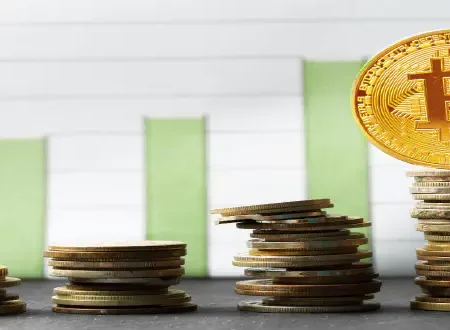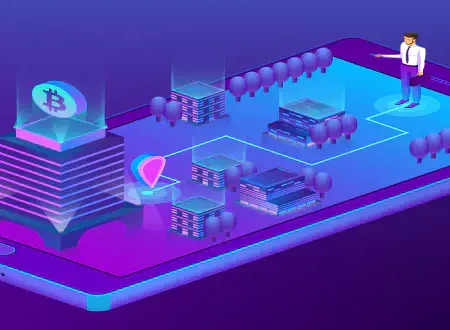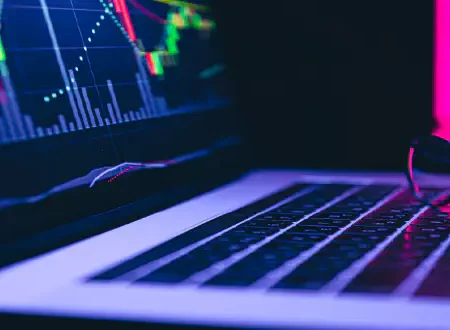Bitcoin mining is a crucial process in the cryptocurrency world. It is the method by which new bitcoins are created and transactions are verified and added to the blockchain. However, mining a bitcoin is not a simple task. It requires a significant amount of computational power and energy.
The time it takes to mine one bitcoin can vary greatly and is influenced by several factors. One of the main factors is the mining hardware used. More powerful and efficient hardware can mine bitcoins at a faster rate. Additionally, the difficulty level of mining is adjusted every 2016 blocks, or approximately every two weeks, to ensure that the average time to mine a bitcoin remains around 10 minutes.
Another factor that affects the time to mine one bitcoin is the total computational power of the entire network. As more miners join the network and contribute their computational power, the difficulty level increases, making it more challenging to mine bitcoins. This means that as more people mine bitcoins, it takes longer to mine one bitcoin.
Furthermore, the cost of electricity also plays a significant role in the time it takes to mine one bitcoin. Mining bitcoin requires a substantial amount of energy, and the cost of electricity can vary greatly depending on the location. Miners operating in areas with low electricity costs will have a significant advantage over those in areas with high electricity costs.
In conclusion, the time it takes to mine one bitcoin is influenced by various factors, including the mining hardware used, the total computational power of the network, and the cost of electricity. While it is difficult to provide an exact timeframe, on average, it takes around 10 minutes to mine one bitcoin. However, this can vary significantly depending on the factors mentioned above.
How Long Does it Take to Mine One Bitcoin?
Mining Bitcoin is the process by which new bitcoins are created and transactions are confirmed on the Bitcoin network. It involves solving complex mathematical problems using powerful computers. The average time it takes to mine one bitcoin can vary depending on several factors:
1. Difficulty level
The difficulty level of mining bitcoins is adjusted every 2016 blocks, approximately every two weeks, to ensure that the block time remains approximately 10 minutes. If more mining power is added to the network, the difficulty level increases, making it harder to mine a bitcoin. Conversely, if mining power decreases, the difficulty level decreases, making it easier to mine a bitcoin.
2. Hash rate
The hash rate refers to the speed at which a mining machine operates. It is measured in hashes per second (H/s) and determines how quickly a miner can solve the mathematical problem and mine a new block. The higher the hash rate, the more chances a miner has of mining a bitcoin in a shorter time.
3. Mining pool
Miners can choose to join mining pools, which are groups of miners who combine their computational power to increase their chances of mining a bitcoin. When a block is successfully mined, the reward is divided among the pool members based on their contribution. Joining a mining pool can increase the likelihood of mining a bitcoin, but the rewards are shared.
4. Hardware and electricity costs
The type of hardware used for mining and the cost of electricity can also impact how long it takes to mine a bitcoin. High-performance mining rigs with multiple powerful graphics cards or specialized ASIC (Application-Specific Integrated Circuit) miners can mine bitcoins faster but can also be more expensive.
In general, it currently takes around 10 minutes on average to mine one bitcoin. However, this can vary depending on the factors mentioned above. It’s important to note that as time goes on and more bitcoins are mined, the mining difficulty increases, making it even harder to mine new bitcoins.
| Factor | Impact |
|---|---|
| Difficulty level | Affects the time required to mine a block |
| Hash rate | Higher hash rate increases chances of mining a bitcoin faster |
| Mining pool | Joining a pool increases chances, but rewards are shared |
| Hardware and electricity costs | High-performance hardware can mine faster but at a higher cost |
Overall, mining bitcoins requires significant computational power, specialized hardware, and electricity. The time it takes to mine one bitcoin can vary, but it’s a complex and competitive process that continues to evolve as more miners join the network.
The Basics of Bitcoin
Bitcoin is a decentralized digital currency that was created in 2009 by an unidentified person using the name Satoshi Nakamoto. Unlike traditional currencies, such as the US dollar or the euro, Bitcoin is not regulated by any central authority like a government or a central bank. It operates on a technology called blockchain, which is a public ledger of all the transactions that have ever been executed.
How Does Bitcoin Work?
Bitcoin works through a network of computers that run specialized software called Bitcoin miners. These miners solve complex mathematical problems to validate and secure transactions on the network. When a miner successfully solves a problem, they are rewarded with a certain number of Bitcoins, which is how new Bitcoins are created.
Bitcoin transactions are recorded on the blockchain, which is essentially a decentralized ledger maintained by the network of miners. This ledger ensures the integrity and transparency of the transactions, as it is virtually impossible to alter or tamper with the records once they have been recorded and confirmed by multiple miners.
What is Bitcoin Mining?
Bitcoin mining is the process of adding new transactions to the blockchain and validating them. Miners use powerful computers to solve complex mathematical problems, and when they successfully solve a problem, they add a new block of transactions to the blockchain.
Mining is an essential component of Bitcoin, as it is necessary to validate transactions and secure the network against potential attacks. Miners compete with each other to solve the problems and earn the block reward, which consists of newly created Bitcoins and transaction fees paid by users.
How Long Does it Take to Mine One Bitcoin?
The time it takes to mine one Bitcoin can vary depending on several factors, including the mining difficulty, the computational power of the miners, and the current block reward. On average, it takes about 10 minutes to mine one Bitcoin.
However, it’s important to note that mining Bitcoin has become increasingly competitive and resource-intensive over the years. As more miners join the network, the difficulty of the problems they need to solve increases, making it harder to mine Bitcoins. This means that it may take longer to mine one Bitcoin as time goes on.
| Factors | Average Time to Mine One Bitcoin |
|---|---|
| Mining Difficulty | Approximately 10 minutes |
| Computational Power | Can vary |
| Current Block Reward | Can vary |
Overall, mining Bitcoin requires significant computational resources and specialized hardware. It is not a quick or easy process, but it plays a crucial role in maintaining the Bitcoin network and creating new Bitcoins.
The Mining Process Explained
Mining bitcoin is a complex process that requires significant computational power and energy consumption. Here’s a step-by-step explanation of how the mining process works:
- Verification of transactions: Miners start by verifying the authenticity of transactions made on the bitcoin network. They check that the sender has sufficient funds and that the transaction adheres to the network’s rules.
- Grouping transactions: Once verified, miners gather a set of transactions to be added to a new block. This block will be added to the blockchain once mined.
- Creating a block header: Miners then create a block header, which includes important information such as a reference to the previous block, a timestamp, and a nonce.
- Searching for a hash: The most crucial step in the mining process is finding a hash that meets certain criteria. Miners use their computational power to solve a mathematical puzzle by repeatedly hashing the block header with different nonces. The aim is to find a hash that is below a target value set by the network.
- Adding the block to the blockchain: Once a miner finds a valid hash, they broadcast the newly mined block to the network. Other nodes in the network verify the block’s validity and, if successful, add it to their copy of the blockchain.
- Reward and fees: Miners are rewarded for their efforts with newly minted bitcoins and transaction fees. The current reward is set at 6.25 bitcoins per block, halving approximately every four years.
Mining a single bitcoin can take anywhere from a few minutes to several months, depending on factors such as the mining hardware’s computational power, the difficulty of the mining puzzle, and the total mining capacity of the network.
It’s worth noting that as the bitcoin network grows and more miners join the competition, the difficulty of the mining puzzle increases. This adjustment ensures that blocks are mined approximately every 10 minutes, regardless of the total mining power in the network.
| Factor | Effect on Mining Time |
|---|---|
| Computational Power | Increase in computational power reduces mining time. |
| Mining Difficulty | Increase in difficulty prolongs mining time. |
| Network Capacity | Higher capacity reduces mining time. |
In summary, the mining process involves verifying and grouping transactions, creating a block header, searching for a valid hash, and adding the block to the blockchain. The time it takes to mine a bitcoin depends on various factors, and it can range from minutes to months.
The Role of Miners
In the world of cryptocurrencies, miners play a crucial role in maintaining the blockchain network. Their main responsibility is to verify and validate every transaction that occurs on the network. Without miners, the blockchain would not be secure and trustworthy.
Transaction Validation
When a user initiates a transaction, it is broadcasted to the network of nodes. Miners collect these transactions and bundle them into blocks. These blocks contain a collection of transactions waiting to be added to the blockchain.
Once a block is formed, miners compete to solve a complex mathematical puzzle, known as Proof of Work (PoW). This process requires a tremendous amount of computational power and energy. The first miner to solve the puzzle gets the opportunity to add the block to the blockchain and is rewarded with newly minted bitcoins.
Securing the Network
By solving the mathematical puzzle, miners ensure the security and integrity of the blockchain network. The PoW mechanism prevents malicious actors from manipulating the blockchain, as it would require an immense amount of computational power to alter past transactions.
Miners also play a role in reaching consensus within the network. They validate transactions and ensure that the majority of nodes agree on the state of the blockchain. This consensus mechanism adds a layer of trust to the system, making it difficult for any single entity to control or manipulate the network.
Rewards for Miners
Mining bitcoins is a competitive process, and miners invest significant resources in terms of hardware and electricity costs. However, the rewards for successfully mining a block are substantial.
In addition to the newly minted bitcoins, miners also receive transaction fees from the transactions included in the block they mine. These transaction fees incentivize miners to prioritize transactions with higher fees, as they have a higher chance of being included in the next block.
Summary
In summary, miners play a crucial role in maintaining the security and integrity of the blockchain network. They validate transactions, secure the network from malicious attacks, and ensure consensus among nodes. Additionally, miners are rewarded with newly minted bitcoins and transaction fees for their efforts in mining blocks.
Factors Affecting Mining Time
The time it takes to mine one Bitcoin can vary and is influenced by several factors. These factors include:
- Hashrate: The hashrate is the speed at which a miner can solve the mathematical equations required to mine a new block. A higher hashrate means more computational power, resulting in a faster mining time.
- Difficulty Level: The difficulty level is adjusted every 2016 blocks (approximately every two weeks) to maintain a consistent rate of block creation. If the network’s overall hashrate is high, the difficulty level increases, making it harder to mine new blocks and thus increasing the mining time.
- Block Reward: The block reward refers to the number of Bitcoins that miners receive when they successfully mine a new block. Initially set at 50 Bitcoins per block, the reward is halved approximately every four years. As the block reward decreases over time, miners may need to invest more resources to mine a single Bitcoin.
- Electricity Costs: Mining Bitcoin requires a significant amount of electricity, as the computational power needed consumes a lot of energy. The cost of electricity can vary depending on location, and higher electricity costs can affect the profitability of mining and potentially impact the time it takes to mine a Bitcoin.
- Hardware Efficiency: The efficiency of the mining hardware used also plays a role in determining the mining time. More efficient hardware can perform calculations faster and increase the likelihood of successfully mining a new block.
It is important to note that these factors are interconnected and can influence each other. Changes in any of these factors can affect the time it takes to mine one Bitcoin. As technology advances and more miners join the network, the competition increases, making mining more challenging and potentially requiring more time and resources to mine a single Bitcoin.
Additionally, these factors can also impact the profitability of mining. Higher electricity costs and the need for more advanced mining hardware can increase the costs associated with mining, potentially affecting the overall profitability of the mining operation.
Therefore, it is crucial for miners to consider these factors and carefully assess the costs and potential rewards before engaging in Bitcoin mining.
Hardware and Mining Power
Mining Bitcoin requires powerful hardware and a significant amount of mining power. The hardware used for mining is called a mining rig, which consists of specialized computer components specifically designed for mining cryptocurrencies.
ASIC Miners
One of the most popular types of hardware used for mining Bitcoin is the ASIC (Application Specific Integrated Circuit) miner. ASIC miners are specifically designed for mining cryptocurrencies and offer significantly higher performance compared to regular consumer-grade hardware.
ASIC miners are highly efficient at solving the complex mathematical problems required to mine Bitcoin. They are able to perform trillions of calculations per second and are specifically optimized for mining. This makes them much more powerful and faster than traditional computer processors (CPUs) or graphics cards (GPUs).
Mining Power
The mining power of a hardware rig is measured in hashes per second (H/s), which represents the number of mathematical calculations a miner can perform per second. The higher the mining power, the more likely a miner is to solve the mathematical problem and receive the block reward.
The mining power of a hardware rig can vary greatly depending on its specifications and the type of hardware being used. ASIC miners, as mentioned earlier, offer the highest mining power and are specifically designed for mining cryptocurrencies.
Cost and Efficiency
When considering mining hardware, it is important to consider both the cost and efficiency of the equipment. ASIC miners can be quite expensive, with prices ranging from a few hundred dollars to several thousand dollars.
However, their high efficiency and mining power make them more cost-effective in the long run. They consume less electricity compared to other mining hardware, which can significantly reduce operational costs.
Conclusion
In summary, mining Bitcoin requires powerful hardware and a significant amount of mining power. ASIC miners are the most popular type of hardware used for mining due to their high efficiency and mining power. The cost and efficiency of the equipment should be considered when choosing mining hardware.
Difficulty Level and Network Hashrate
In the world of Bitcoin mining, the difficulty level and network hashrate play a crucial role in determining how long it takes to mine one Bitcoin. Let’s take a closer look at these two factors:
Difficulty Level
The difficulty level of mining Bitcoin refers to the complexity of solving the mathematical puzzles required to add new blocks to the blockchain. The difficulty is adjusted approximately every two weeks to ensure that the average time to mine a new block remains around 10 minutes.
When the network has a high computational power, the difficulty level increases, making it harder for miners to find the solution. On the other hand, if the network’s computational power decreases, the difficulty level decreases as well.
The difficulty level is adjusted using a formula that takes into account the overall network hashrate and the desired block time. This ensures that mining remains competitive and prevents new blocks from being added too quickly or too slowly.
Network Hashrate
The network hashrate refers to the total computational power of all miners participating in the Bitcoin network. It is measured in hashes per second (H/s) or more commonly in terahashes per second (TH/s).
As more miners join the network and invest in powerful mining equipment, the network hashrate increases. A higher hashrate means more computational power is dedicated to mining, and therefore, the network becomes more secure.
The network hashrate can fluctuate over time depending on various factors such as the availability of efficient mining hardware, electricity costs, and profitability. When the network hashrate increases, it becomes more difficult to mine new Bitcoins due to the increased competition among miners.
Impact on Mining Time
The difficulty level and network hashrate directly impact the time it takes to mine one Bitcoin. If the network hashrate increases significantly, the average time to mine a new block also increases. This means it takes longer to mine one Bitcoin. Conversely, if the network hashrate decreases, the average time to mine a new block decreases as well.
It’s important to note that while the difficulty level and network hashrate determine the average time to mine one Bitcoin, individual miners may experience shorter or longer mining times due to luck and randomness in the mining process.
Overall, the difficulty level and network hashrate are dynamic factors that continuously adjust to maintain the desired average block time in the Bitcoin network. Understanding these factors is essential for miners to calculate their potential mining earnings and plan their mining operations.
Block Rewards and Halving
In the world of Bitcoin mining, block rewards play a crucial role. Whenever a miner successfully mines a new block, they are rewarded with a certain number of bitcoins as a block reward. This system is designed to incentivize miners to continue mining and secure the Bitcoin network.
The current block reward for mining a new block on the Bitcoin network is 6.25 bitcoins. However, this was not always the case. When Bitcoin was first launched in 2009, the block reward was set at 50 bitcoins. Every 210,000 blocks, or approximately every four years, the block reward is halved. This event is known as the “halving.”
Halving:
Halving is a built-in feature of the Bitcoin protocol that occurs to control the rate at which new bitcoins are created. It ensures that the total supply of bitcoins is capped at 21 million. The halving is programmed to occur every 210,000 blocks until the maximum supply is reached.
Effects of Halving:
When the block reward is halved, it has significant implications for Bitcoin miners. As the reward decreases, miners receive fewer bitcoins for their mining efforts. This reduces the profitability of mining and makes it harder for miners to cover their operational costs.
However, the decrease in block rewards also limits the supply of new bitcoins entering the market, which can potentially increase the value of existing bitcoins. This is because halving reduces the rate of inflation in the Bitcoin ecosystem, making bitcoins more scarce and potentially more valuable.
History of Halving:
The first halving occurred in 2012 when the block reward was reduced from 50 bitcoins to 25 bitcoins. The second halving took place in 2016, reducing the reward to 12.5 bitcoins. The most recent halving occurred in May 2020, reducing the reward to the current 6.25 bitcoins.
Future Halvings:
Based on the current block reward and the 210,000 block interval, the next halving is projected to happen in 2024. After that, the block reward will be reduced to 3.125 bitcoins. This process will continue until the total supply of bitcoins reaches 21 million, at which point no more halvings will occur.
Conclusion:
Block rewards and halvings are fundamental aspects of the Bitcoin mining ecosystem. They provide incentives for miners to secure the network and control the rate at which new bitcoins are created. Halvings have a direct impact on miners’ profitability and the overall supply and value of bitcoins. Understanding the concept of block rewards and halvings is essential for anyone interested in Bitcoin mining and the economics of the cryptocurrency.
Time to Mine One Bitcoin Today
Mining one bitcoin today is a much more complex and time-consuming process compared to the early days of Bitcoin. The time it takes to mine a single bitcoin depends on various factors, including the mining hardware, network difficulty, and electricity costs.
Mining Hardware
The mining hardware used plays a crucial role in determining the time it takes to mine one bitcoin. In the early days, individuals could mine bitcoins using their personal computers or even CPUs. However, as the network difficulty increased and more people started mining, specialized mining hardware known as ASICs (Application-Specific Integrated Circuits) was introduced.
ASIC miners are specifically designed to perform the complex calculations required for mining bitcoins much more efficiently compared to CPUs, GPUs, or FPGAs. They are significantly faster and more power-efficient, resulting in a higher chance of successfully mining a bitcoin block.
Network Difficulty
The network difficulty is a measure of how difficult it is to find a hash that meets the required criteria for bitcoin mining. This difficulty adjusts approximately every two weeks to ensure that the average time to mine a block remains around 10 minutes.
As more miners join the network and more computing power is added, the network difficulty increases. This means that miners need to invest in more powerful hardware and consume more electricity to compete with other miners and maintain profitability.
Electricity Costs
Electricity costs also play a significant role in the time it takes to mine one bitcoin. Bitcoin mining requires a significant amount of electricity to power the mining hardware and keep it cool. The cost of electricity can vary depending on location and the efficiency of the mining setup.
Miners need to consider the cost of electricity and balance it with the potential rewards of mining. In some regions with high electricity prices, it may take longer to mine a bitcoin due to the increased operational costs.
Conclusion
Mining one bitcoin today requires specialized mining hardware, a high level of competition, and considerations of electricity costs. It may take several months or even years to mine one bitcoin, depending on the factors mentioned. As the network difficulty continues to increase and the block rewards decrease over time, the mining process becomes more challenging and less profitable for individual miners.
Future Predictions for Mining Time
The future of Bitcoin mining time is a topic of significant speculation and debate. As technology continues to advance, it is likely that the time it takes to mine one Bitcoin will decrease.
Some experts predict that improvements in hardware technology will lead to faster mining times. For example, the introduction of more powerful ASIC (Application-Specific Integrated Circuit) chips specifically designed for Bitcoin mining has already significantly increased mining efficiency. These advancements may continue in the future, allowing miners to complete the mining process at a faster rate.
Additionally, the Bitcoin network itself undergoes regular updates and improvements. These updates, such as the implementation of the Lightning Network, aim to increase the scalability and speed of transactions on the network. As a result, the time it takes to mine a Bitcoin may also decrease as the network becomes more efficient.
Another factor to consider is the total computing power of the network. Currently, the Bitcoin network’s total computing power, or hash rate, is at an all-time high. However, it is difficult to predict how this will change in the future. If the hash rate continues to increase, mining difficulty will also increase, potentially slowing down the time it takes to mine one Bitcoin.
On the other hand, there is also the possibility of technological breakthroughs or changes in mining algorithms that could make mining even more efficient. These developments could potentially result in a significant decrease in mining time.
Overall, the future predictions for Bitcoin mining time are uncertain. While it is likely that advancements in technology will lead to faster mining times, other factors such as network updates and changes in mining difficulty can also influence the time it takes to mine one Bitcoin. It will be interesting to see how these factors play out in the years to come.
Alternatives to Mining
While mining is the most common way to acquire Bitcoin, it is not the only method available. Here are some alternatives to consider:
1. Buying Bitcoin
One of the simplest ways to acquire Bitcoin is to buy it directly from a cryptocurrency exchange. These platforms allow users to purchase Bitcoin using traditional currency, such as U.S. dollars or euros. The process is relatively straightforward and does not require any technical mining equipment or expertise.
2. Bitcoin Faucets
Bitcoin faucets are websites or apps that reward users with small amounts of Bitcoin for completing simple tasks or captchas. While the amounts earned are typically small, Bitcoin faucets provide a way for individuals to accumulate Bitcoin without the need for expensive mining hardware.
3. Bitcoin Cloud Mining
Cloud mining allows individuals to rent mining equipment remotely and mine Bitcoin without the need for physical hardware. Companies offering cloud mining services typically have large-scale mining operations and allow users to purchase mining contracts. While this can be convenient, it is important to conduct thorough research to ensure the company is reputable and offers fair terms.
4. Bitcoin Staking
Unlike mining, which relies on computational power, staking involves holding a certain amount of cryptocurrency in a wallet to support the network’s operations. In return, stakers earn rewards in the form of additional cryptocurrency. Some cryptocurrencies, such as Ethereum 2.0, have implemented staking as an alternative to mining to reduce energy consumption.
5. Bitcoin Mining Pools
Mining pools are groups of miners who combine their computational resources to increase their chances of mining a block and earning Bitcoin rewards. By joining a mining pool, individual miners can contribute their hash power and receive a share of the block rewards in proportion to their contribution. This can be a more reliable and consistent way to earn Bitcoin compared to solo mining.
6. Bitcoin ATM
Bitcoin ATMs are physical machines that allow users to buy or sell Bitcoin using cash or debit cards. These ATMs provide a convenient way for individuals to access Bitcoin without the need for online exchanges or mining equipment. However, it’s important to note that Bitcoin ATMs may charge higher fees compared to online exchanges.
7. Bitcoin Rewards Programs
Some websites and platforms offer Bitcoin rewards as an incentive for users to complete certain tasks or engage with their products or services. This can include activities such as watching advertisements, participating in surveys, or testing new applications. While the rewards may be relatively small, they can accumulate over time and provide an alternative way to acquire Bitcoin.
8. Peer-to-Peer Trading
Peer-to-peer trading platforms allow individuals to buy and sell Bitcoin directly with each other, without the need for a centralized exchange. These platforms connect buyers and sellers and facilitate the transfer of funds. This can be an option for individuals who prefer to trade directly with others and want more control over the buying process.
Overall, while mining is the most well-known method for acquiring Bitcoin, there are various alternatives available that cater to different preferences and circumstances. Whether you choose to buy Bitcoin, earn it through faucets or rewards programs, or explore other methods mentioned, it’s important to consider factors such as cost, convenience, and security before making a decision.
Q&A:
What is Bitcoin mining?
Bitcoin mining is the process of verifying and adding new transactions to the blockchain, the public ledger of all Bitcoin transactions. It is also the means through which new Bitcoins are created and issued to miners as a reward for their work.
How long does it take to mine one Bitcoin?
The time it takes to mine one Bitcoin varies depending on several factors, including the mining hardware’s processing power, the network’s difficulty level, and the luck of the miner. On average, it takes about 10 minutes to mine one Bitcoin.
What is the mining process?
The mining process involves solving complex mathematical equations using powerful computers. Miners compete to solve these equations, and the first one to find the correct solution is rewarded with new Bitcoins. This process is known as proof-of-work.
How does the network difficulty level affect mining time?
The network difficulty level is adjusted every 2016 blocks, or approximately every two weeks, to maintain a consistent block production rate of approximately 10 minutes. If more miners join the network, the difficulty level increases, making it harder to mine new Bitcoins. Conversely, if miners leave the network, the difficulty level decreases, making it easier to mine.
What is the role of mining hardware?
Mining hardware, such as ASIC (Application-Specific Integrated Circuit) miners, is specially designed to perform the mathematical calculations required for mining. The more powerful the hardware, the higher the chances of successfully mining a Bitcoin within a shorter time frame.
Can I mine Bitcoin using my regular computer?
In the early days of Bitcoin, it was possible to mine using a regular computer’s CPU or GPU. However, as the network difficulty level has increased, specialized mining hardware is now required to mine profitably. Attempting to mine with a regular computer would likely be inefficient and cost more in electricity than the value of the mined Bitcoin.
Is Bitcoin mining profitable?
Bitcoin mining can be profitable if done correctly. However, it requires significant investment in mining hardware and electricity costs. Additionally, the price of Bitcoin is volatile, so profitability can fluctuate. It is important to consider all costs and factors before deciding to mine Bitcoin.









As a reader, I found the article on “How Long Does it Take to Mine One Bitcoin? Explained!” quite informative and engaging. The author did a great job of breaking down the complex process of bitcoin mining into easily understandable concepts. I now have a clear understanding of the factors that affect the time it takes to mine one bitcoin. The article explained that the mining process involves solving complex mathematical puzzles, and the more miners there are, the longer it takes to mine a bitcoin. Additionally, the difficulty level of the puzzles and the mining equipment used also play a significant role in the time it takes. The article also touched upon the concept of mining pools, where multiple miners join forces to increase their chances of mining a bitcoin. I found this particularly interesting as it not only reduces the time it takes to mine but also allows for a more distributed mining process. Overall, the article provided valuable insights and answered my questions regarding the time it takes to mine one bitcoin. I appreciate the author’s efforts in explaining the technical aspects in a clear and concise manner, making it accessible to readers like me.
I found this article on mining Bitcoins really informative and fascinating! As a woman interested in cryptocurrency, I’ve always been curious about the process of mining and the time it takes to mine one Bitcoin. The article explains that the time can vary depending on various factors such as the mining equipment being used, the mining difficulty, and the overall hash rate of the network. It mentions that back in 2009, when Bitcoin was first introduced, mining a single coin could be done using a regular CPU within a few minutes. However, as the popularity and value of Bitcoin increased, the mining process became more complex and time-consuming. Nowadays, with specialized mining hardware called ASICs, it can take several months or even years to mine one Bitcoin. This is due to the high competition among miners and the need for massive computational power to solve the complex mathematical problems required for mining. Overall, this article provided a clear explanation of the factors affecting the time it takes to mine a Bitcoin, and I now have a better understanding of this intriguing process.
As a tech enthusiast and cryptocurrency investor, I’ve always been curious about the process of mining Bitcoin. This article provides a great explanation of how long it takes to mine one Bitcoin. It’s fascinating to learn about the intricate calculations and computational power required to mine this digital currency. The article explains that the time it takes to mine one Bitcoin depends on several factors, such as the mining hardware’s efficiency and the current level of difficulty. It’s interesting to note that as more miners join the network, the difficulty increases, making it even more challenging to mine a single Bitcoin. I appreciate the author’s explanation of the concept of mining pools, where miners combine their computational power to increase their chances of mining a Bitcoin. This collaborative approach seems like a practical solution to the increasing complexity of the mining process. Overall, this article provides a comprehensive overview of the time it takes to mine one Bitcoin. It’s evident that mining Bitcoin requires significant computational resources and can be a time-consuming process. This information will definitely help me immediate edge make more informed decisions in my cryptocurrency investments.
This article provides a clear and detailed explanation of the time it takes to mine one Bitcoin. As a reader, I found it extremely informative and helpful in understanding the process of Bitcoin mining. The article breaks down the mining process and the factors that influence the time required to mine a Bitcoin, such as the mining difficulty and the computational power of the network. The author does a great job of explaining the concept of mining and how miners solve complex mathematical problems to validate transactions and secure the Bitcoin network. It is fascinating to learn that the mining process is becoming more challenging over time, requiring more computational power and specialized hardware. I also appreciated the information on mining pools and how they can increase the chances of earning Bitcoins. The article emphasizes the importance of a good mining strategy and the role of luck in successfully mining a Bitcoin. Overall, I found this article to be a valuable resource for anyone interested in understanding the intricacies of mining Bitcoins. It provided me with a comprehensive understanding of the time and effort involved in the mining process. I would highly recommend this article to anyone looking to delve deeper into the world of Bitcoin mining.
As a female reader, I found this article “How Long Does it Take to Mine One Bitcoin? Explained!” to be quite informative. It provided a comprehensive explanation of the process of mining Bitcoin and the factors influencing the time it takes to mine one Bitcoin. I appreciated how the article delved into the concept of difficulty and how it adjusts every 2016 blocks, making mining more challenging over time. The article also discussed the role of mining hardware, such as ASICs, in determining mining speed. It explained how specialized equipment is necessary to compete with other miners and increase the chances of successfully mining a Bitcoin block. Additionally, the article touched upon mining pools and their role in reducing the time required to mine one Bitcoin by pooling resources. I particularly enjoyed the section that addressed the average time it takes to mine one Bitcoin. It clarified that there is no fixed time as it depends on the computational power of the network and the specific miner. However, it provided insights into averages based on the current network difficulty and the mining hardware used. Overall, this article provided me with a solid understanding of the time it takes to mine one Bitcoin. It was well-written, easy to follow, and answered the questions I had on the topic. I highly recommend this article to anyone interested in learning about Bitcoin mining and the factors affecting mining time.
As a male reader, I found this article on “How Long Does it Take to Mine One Bitcoin? Explained!” quite informative. It provided a clear explanation of the process and the factors affecting the time it takes to mine a Bitcoin. The article highlighted that mining a Bitcoin requires solving complex mathematical problems, and the time it takes largely depends on the mining hardware’s computational power and the level of competition in the network. It was interesting to learn that the more powerful the hardware, the faster the mining process. Additionally, the article shed light on the concept of mining difficulty and how it adjusts every two weeks to maintain a consistent average time of 10 minutes to mine a block. Overall, I found this article to be a helpful overview for someone like me who is interested in understanding the intricacies of Bitcoin mining.
As a male reader, I find the article “How Long Does it Take to Mine One Bitcoin? Explained!” quite informative. The author does a great job in explaining the complexities and time-consuming process of mining a single Bitcoin. I appreciate the details provided regarding the mining hardware, the ever-increasing difficulty level, and the importance of mining pools. It’s fascinating to learn that it can take an average of 10 minutes to mine one Bitcoin, but this can vary depending on factors such as computational power and network congestion. The article also sheds light on the concept of halving and its impact on mining rewards. Overall, I enjoyed reading this article as it helped me gain a better understanding of the time and effort required to mine Bitcoin.